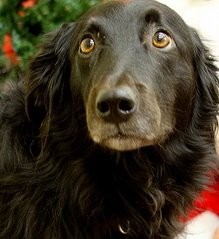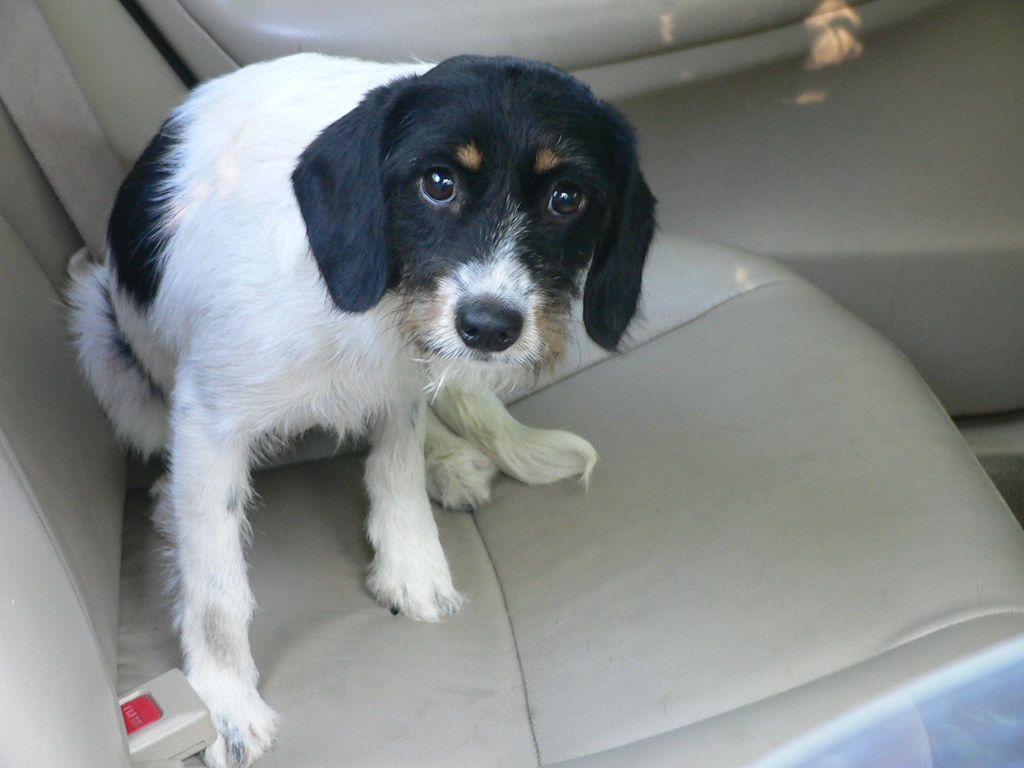You get a dog. You take her home. You feed her. You buy her toys. You take her for walks. You expect to have a friend and loyal companion. You picture life being great with your new dog!
But sometimes, dogs can be afraid of their owner.
Sadly, I hear, “Why is my dog afraid of me?” from owners who are scared their dog doesn’t like them or is uncomfortable with them.
“I’m not sure if my dog loves me.”
“My dog likes other people in the household better than he likes me.”
“My dog avoids me.”
“My dog goes the other way if I walk towards her.”
Here’s a situation that I know about:
When my great pyrenees hit adolescence he discovered the world was full of great things that my praise, petting and dry treats couldn’t compete with. I was led to believe that he needed to know he was doing something wrong when he refused to walk nicely on a leash, refused to come when called, and barked when I left him.
Some of his behavior improved, but barking at my absence and refusing to come when called, got worse.
At the time, I worked for a board and train facility. They convinced me to use a shock collar. They told me the collars are humane would give my dog freedom. I used it to correct barking and to get him to come when called. He didn’t seem overly upset with it, so I thought it was ok.
When he started developing dog aggression a friend told me there was better way.
When I stopped using aversives and started focusing on how he was feelin, I realized just how much damage I had done to our relationship. He avoided looking at me during training. Although he wanted to be within my sight, he kept distance between us. Sometimes he stiffened and froze up when I touched him. When I asked him to do something, he either blew me off or did it with his head held low.
It seemed like he loved me, but didn’t fully trust me. I was not his gateway to fun. In fact, I was inconsistently dangerous.
Once I stopped using aversives our bond took over a year to recover. I cried happy tears when he chose to be near me instead of looking elsewhere for fun on walks. My heart melted when he leaned into me at my touch. When he watched my face and maintained eye contact without any prompts, I knew I had finally become his partner.
I hear so many stories like this.
Why is my dog afraid of me?
Dogs learn by association.
If this, then that.
Good
- If this person comes near me with a ball in their hand, then good things happen because we’re going to play fetch.
- If this person approaches me with a leash in hand, then it means we’re going for walkies! Yay!
Bad
Sometimes even the same things that can be happy for a particular dog, may scare a different dog.
- If this person comes near me with a ball in their hand, then they are going to throw it at me.
- If this person approaches me with a leash in hand, then they will put something over my head and that scares me!
How do dogs become afraid of their owners?
 Learning history. Sometimes doggy logic makes sense. They had a bad experience (either with you or with someone else) and learned to be fearful. Sometimes it’s not because of something the human did, but something happened just before something else. For example, you pick up the leash and then a car back fires, startling your dog. The dog now believes, “if leash, then loud scary noise.”
Learning history. Sometimes doggy logic makes sense. They had a bad experience (either with you or with someone else) and learned to be fearful. Sometimes it’s not because of something the human did, but something happened just before something else. For example, you pick up the leash and then a car back fires, startling your dog. The dog now believes, “if leash, then loud scary noise.”
You may not have even noticed at the time.
Dog training is an unregulated industry. People who have dog problems are relying on experts to help them. But sadly, not all trainers are created equal and it’s hard for the average dog owner to know how to choose a dog trainer. Collar yanks, low intensity shocks, smacks to the butt, yelling and other loud noises, may not physically harm your dog but can hurt your dog’s confidence in the world and in you. Many of these disciplinary measures are considered mild by many pet owners. And yet, they can be damaging, sometimes severely so.
If your dog trainer asks you to do something that makes you feel uncomfortable, trust that inner voice.
If your dog trainer tells you that something that seems painful or uncomfortable, doesn’t hurt, vote with your feet.
Human body language. From a dog’s point of view, many human behaviors are quite rude. We loom over dogs. We pet them over the top of their heads. We crowd them.
Imagine being very small and having a bunch of monstrously large creatures looming over you all the time!
We also hug dogs. Hugging is primate behavior. In general, dogs don’t like hugs. I have seen some dogs who do seem to like it, but there’s a need for great caution as we can’t see the dog’s face when we’re hugging. And it is human behavior that can scare many dogs.
Genetics. Some dogs are naturally more cautious and fearful. There may be a genetic component to this. and things that people do that don’t bother other dogs, can be frightening for some.
Body handling issues. Many dogs are frightened by grooming activities including baths, nail trimming, and even brushing. When grooming is forced on dogs who are scared, it may also create a dog who mistrusts the owner.
None of the above. Some dogs are more independent by nature. They may be more inclined to keep to themselves, only seeking affection here and there. My little terrier mutt is like this. He enjoys doing his own thing. It’s not personal! He loves me! 🙂
What can you do if your dog is afraid of you?
This is fixable!
- Become the source of so many wonderful things!
- Every dog will start making happier associations if you predict high value, soft, smelly, people food. Use tiny bits in frequent amounts.
- Look for opportunities to catch your dog doing something you like. When you catch him being good, give him a treat! (Bonus! Your dog will start doing more of the things you’re rewarding.)
- Discontinue any training interventions that scare or annoy your dog.
- Help your dog feel safe. Don’t overface her. Take things slow. Don’t force things.
- Give your dog choices.
And if you still feel like your dog is afraid of you, let’s talk about it in your free 15 minute phone consultation.
